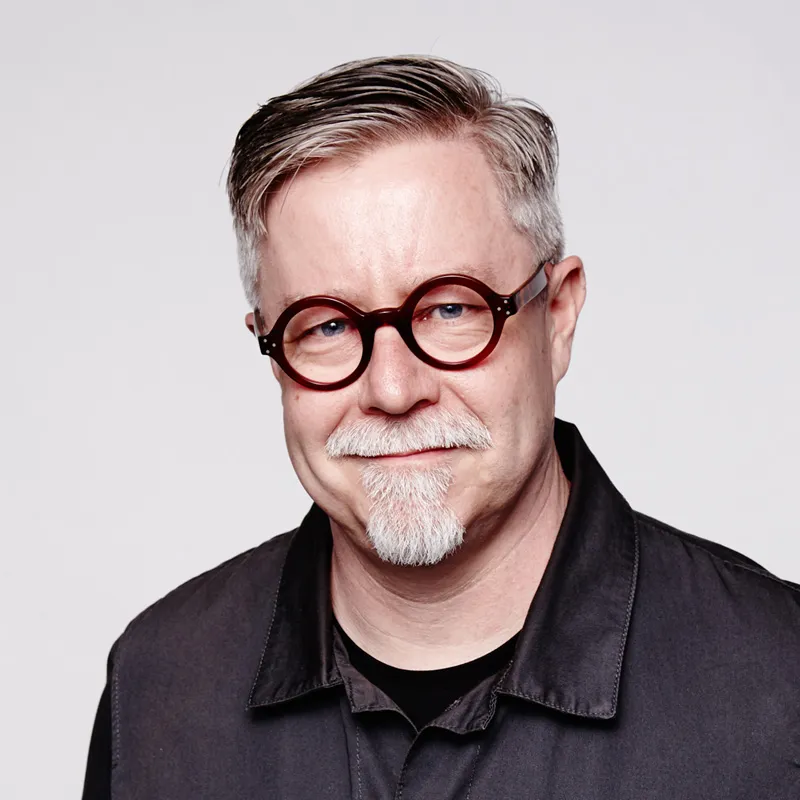5 takeaways from New York Climate Week

Much of our work at IDEO is framed by the idea of the Climate Era: that we are now in a fixed period of time when humanity's understanding of the challenges of the climate crisis is still matched by its ability to meet them.
We believe that period of time is fleeting and precious; it demands action, now.
We’ve jumped into the work with our clients, like Conservation International, Sage, The Earthshot Prize, and the Rockefeller Foundation. We’ve also headed to critical events, like COP 27, and, just a handful of days ago, New York Climate Week 2024 (NYCW). This year’s theme, It’s Time, reflected a clear focus on progress and case studies over goal-setting, both exemplifying the urgency of the work and highlighting the places where it’s actually in motion and making a difference.
On the ground, a group of IDEO design leaders hosted events at the kyu House to share how we can explore opportunities to tackle the climate crisis with creativity. We also heard from companies large and small, governments, activists, scientists and more about the state of the planet, the places where the damage continues, and brilliant and creative ways people are fighting to turn the tide.
Here are five insights from our time at NYCW.

1. The power of imagination was everywhere
The scale of the climate crisis demands action that matches its magnitude. Much of that progress is slow and deliberate for good reason. (It allows for thorough research, careful policy development, technological advancements, and proper stakeholder engagement to ensure effective and equitable long-term solutions.) But there’s also a need for bold, paradigm-shifting moves that can propel climate action forward at speed—and that requires imagination.
This year at New York Climate Week, I witnessed incredible creative solutions in spaces where regulation often leads the conversation. Hearing Vermont’s Attorney General, Charity Clark, share how the state used consumer protection laws to win its lawsuit against Exxon for greenwashing demonstrated how existing legal frameworks can be repurposed to address climate challenges. The state also created the nation’s first "Climate Superfund" to hold Big Oil accountable. This law empowers Vermont's Attorney General to pursue payment from major oil companies for a share of climate change costs incurred by the state since 1995, based on their products' global contributions to the problem.
This case exemplifies how challenging the status-quo with courageous creativity can make a real impact on climate challenges. Imagination isn't just a tool—it's a catalyst for real change.
—Nazlican Goksu

2. The Climate Era calls for integrating AI and nature—not choosing between them
In the early months of 2024, I observed a concerning trend: leaders shifting priorities and budgets toward AI innovation at the expense of climate initiatives, as if the two are mutually exclusive. This is a false choice. The Climate Era demands a transformation where technology and nature are not opposing forces but complementary allies.
However, it was reassuring to see numerous events and active participation on the topic of Climate and AI, with leading organizations from unexpected industries—like big tech—leaning into the conversation with practical applications aimed at tackling complex planetary challenges. AI, technology, and nature will be the foundational building blocks of future organizations.
Good design starts upstream; it begins by questioning why we seek technical solutions and how they can align with sustainable goals. When harnessed thoughtfully, AI can amplify our efforts against climate challenges—from faster wildfire detection to monitoring coral reef health and predicting deforestation. My takeaway is clear: Integrating AI into climate action isn’t just possible; it’s essential. But ensuring that all eight billion people on the planet can participate in designing and benefiting from AI climate solutions in an equitable way remains one of the most critical challenges of today.
—Sergio Fregoni
3. Approaching tipping points underscores the importance of fresh visions
NYCW and the UN General Assembly converged at a moment of realized tipping points. A big one? For the first time, the Amazon rainforest has shifted to a net emissions source. That context flavored a week that felt urgent, deep in execution, and…joyfully rebellious. To meet this shifting moment, we created an experiential journey focused on the question “What if we get it right?” with the Rockefeller Foundation, scientist Dr. Ayana Elizabeth Johnson, journalist Elizabeth Kolbert, and climate change leaders from Amazonia and Latin America.
Design has an immersive power to reach hearts beyond minds, and we explored realistic but proactive climate futures through the senses: tasting Ecuadorian biodiverse forests in a gummy, seeing arid landscapes through a viewfinder, touching seeds of regeneration, and hearing indigenous voices. Inspiration, but also rigorous practicality, driven by those living at the frontlines.
These experiences brought into relief how important it is to make big bets to break and transform consumption, value, and culture. Incredible people are building pathways (lifeboats) to the future on this swiftly tilting planet, but those with the power to change course continue to drive us toward collapse. I’m heartened by those working around this system. Onwards.
—Natalia Vasquez

4. Connecting with inspiration and support beyond your area might be critical...
Imagine you could float above New York during Climate Week and take stock of all the people, ideas, and resources present in the city at the same time. Much of what we need to address the challenges of the Climate Era already exists. But it’s extraordinarily difficult for various pieces of the puzzle to find each other—if they even know they’re there at all.
This year, I was privileged to hear about a set of amazing projects being pioneered across Latin America by the first cohort of The Rockefeller Foundation’s Big Bets Fellowship; I was grateful to moderate an energetic conversation among sustainability leaders from the global business travel sector; and I was excited to be in the room as teams from some of the world’s leading businesses advanced their ambitions for climate action by asking themselves seemingly impossible questions.
But what if all these people had met each other, and perhaps helped each other? And what if that happened not just by happenstance, but by design, so that people who perhaps aren’t even aware of each others’ potential can find each other faster and more meaningfully? What might that have unlocked? My takeaway from NYCW is this: We need to design better ways to build the jigsaw puzzle to bring these changemakers together—and fast.
—Alex Gallafent
5. …but exploring new ideas and relationships internally is just as important
During our Space Between Urgent and Impossible session, focused on pushing past boundaries to find novel solutions, I was struck by the response from one of the teams. They realized that they never get together to talk about big or new ideas. We all spend plenty of time networking with others outside our organizations on the climate challenge, but maybe there is an opportunity to spend more time having conversations, building relationships, and exploring bigger ideas inside. These conversations benefit from being structured and intentional—a safe space where new thinking can emerge outside the constraints of short term considerations.
—Tim Brown
Did we miss you at Climate Week? Need help kickstarting a climate project of your own? Get in touch.
Words and art






Subscribe

.svg)









